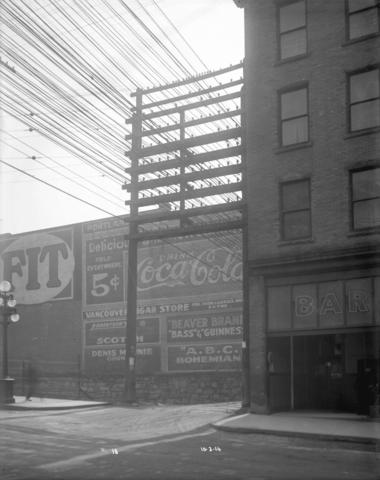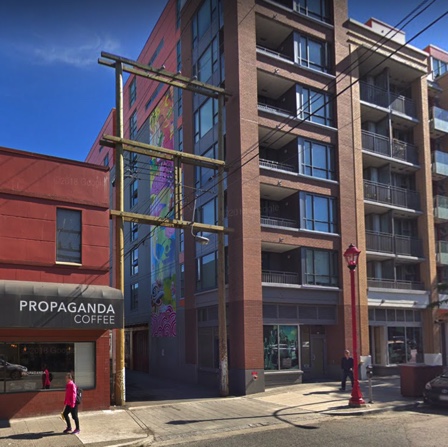Yes of course, maybe…
H-frame power poles have graced most downtown Vancouver lanes for over 80 years but with modernization of the electrical system BC Hydro has been busy putting the power lines underground and the H-frames have largely disappeared from the downtown core. A few lanes in the Downtown Eastside, Gastown and Chinatown still retain their H-Frames for the time being but not for much longer it seems.
Chinatown is in the midst of a multi-year program of evaluation, discovery and initiatives in the lead up to a potential application for World Heritage site status as a Cultural Landscape. Simply put, Chinatown with its remaining food stores, bbq and roasted meats, fish retailers and bakeries along with the active clan and county associations and where Cantonese and its dialects are still spoken forms a unique cultural landscape.
So H-frames.
Chinatown’s look and feel comes from many sources such as the architecture, the dragon-style street lights, sidewalk paving and the Ginkgo trees planted in the 1980s along Pender Street, and from the lesser seen things such as the H-frames in the lanes.
Historically, electric power and Chinatown have had a close relationship. The original powerhouse for the Vancouver Electric Railway and Light Company was situated on the edge of the district between East Georgia and Union Streets just west of Main Street. From the power house a myriad of power lines ran through the lanes east and west of Main Street delivering power to the city. The H-frames in these two lanes while not carrying the same volume of wires are a reminder of that historic connection.
Chinatown is in the process of mapping its cultural assets which include obvious items such as historic buildings, food, cultural activities and the less obvious such as the granite curbs or the paving stones and wood blocks found under the layers of asphalt in the lanes and on the street, and the intangible such as the sounds of mahjong being played or a parking lot that was once the site of an important theatre. The H-frames may be part of that catalogue of assets and so they shouldn’t be removed from Chinatown before this mapping work has been completed.
It might turn out that the H-frames can be reimagined as part of the often discussed lane activation to host innovative lighting, artwork, signage or whatever else that might emerge. Or they are left in place as industrial artifacts.
The H-frames should be retained while the work on Chinatown continues. It makes no sense to lose a potential resource and important visual aspect of the area before they are properly evaluated as part of the asset mapping.
—
What’s on an H-frame
The top wires, the primary conductors, carry most of the electricity on the pole, moving down, the next set of wires consists of secondary conductors, typically delivering power to buildings while the lowest wires are cable and telephone lines.
The barrels hanging on a utility pole is a transformers used to lower the amount of voltage between the primary wires and secondary lines.




2 thoughts on “H-frame Power Poles: A cultural asset for Chinatown?”